While it originated in Taiwan in the 1980s, bubble tea’s popularity has absolutely exploded worldwide in recent years. Where frozen yogurt shops and smoothie stores once reigned supreme, bubble tea cafes have swooped in and taken over the world of these on-the-go sweet treats. These days, you can hardly throw a rock without hitting one of these trendy spots. So what’s all the fuss about? What is boba tea, exactly? And better yet, is there a way for you to save money by making your own version at home?
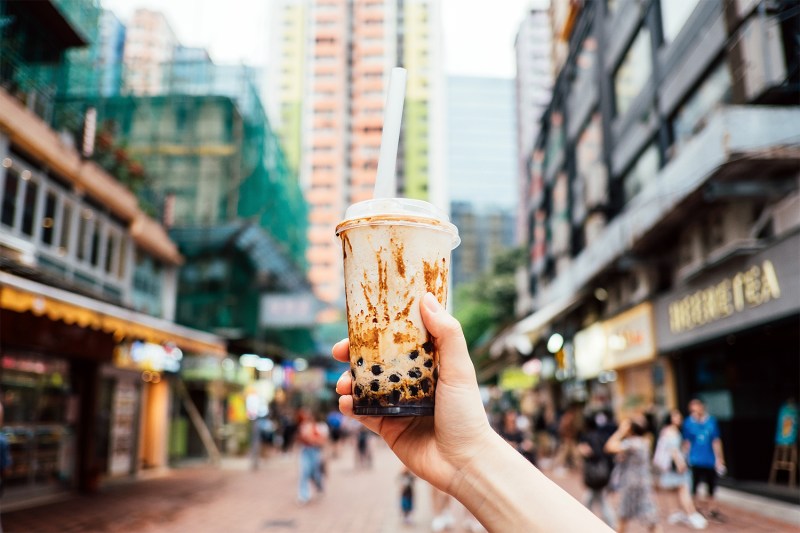
What is bubble tea?
Bubble tea is a chilled, sweetened tea drink containing “boba” (bubbles) made from tapioca flour. The popularity of this beverage is undoubtedly, at least in part, due to its uniqueness. While almost every other beverage is simply liquid, bubble tea is different because of the texture of the tapioca bubbles. This creates a totally new drinking experience, which is always a plus in the world of food trends.
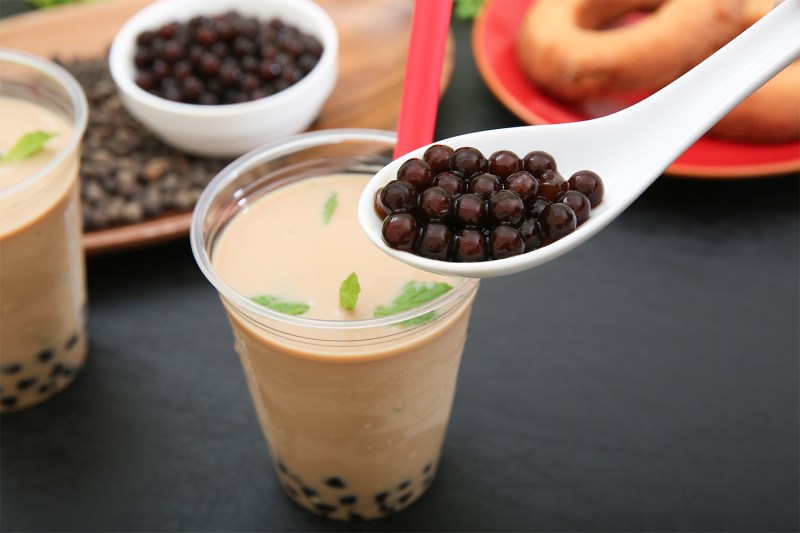
What’s the difference between bubble tea and boba?
These two words mean the same thing when referring to bubble (or boba) tea. They’re completely interchangeable. Though the word “boba” refers to the tapioca pearls, it can also be used as a name for the drink itself. “Bubble” simply caught on as the drink gained fame because, well, it’s pretty fun to say.
In Chinese, “boba” is actually a slang term for a certain rounded and voluptuous part of the female anatomy. A common gimmick in Asian shops is to advertise their “boba” as being bigger and juicier than their competitors. Not gonna lie, that’s a pretty effective — not to mention humorous — marketing ploy.
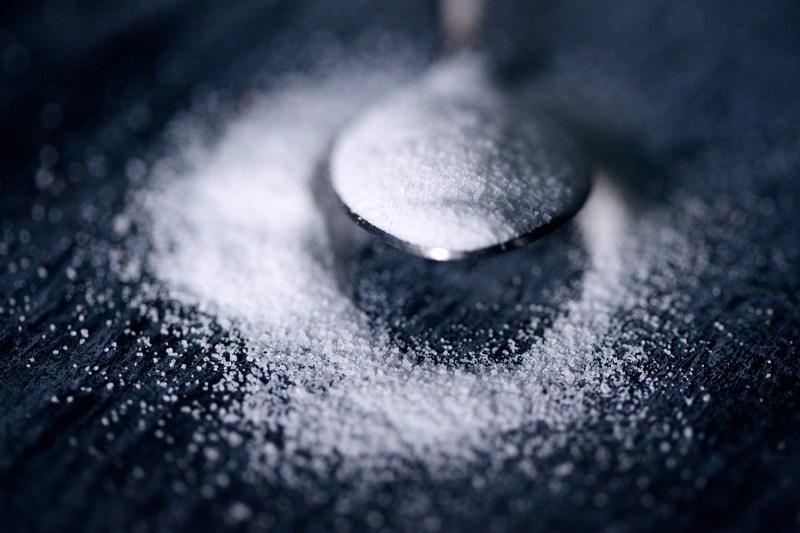
Is drinking bubble tea healthy?
To put it simply, no. It’s difficult to decipher why people are under this impression. Depending on its type, tea can certainly have health benefits; think black and green tea. But overall, this is hardly a health drink. There’s usually quite a bit of sugar used to sweeten the beverage, and the tapioca pearls are just starch and carbs with no actual nutritional value. It certainly tastes great, though! And hey, if you’re going to have a dessert, you could certainly do a lot worse.
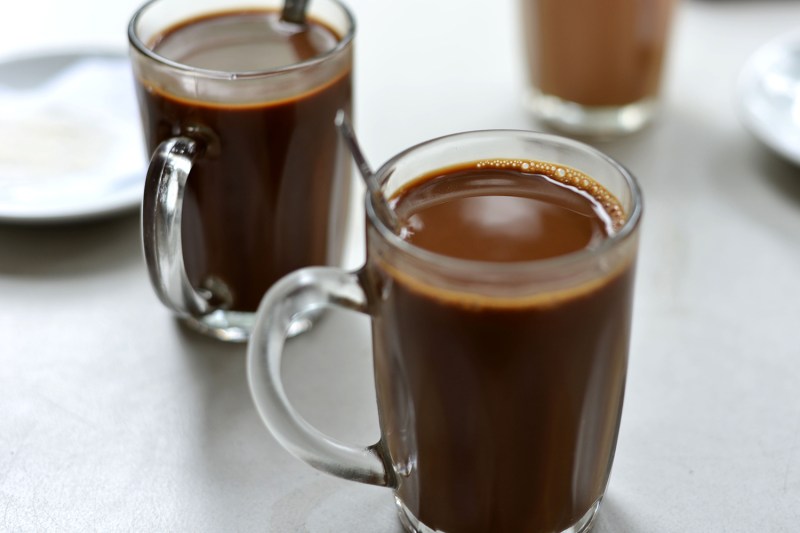
What is the best boba flavor for beginners?
The recipe below is a great start for beginners. It’s simply tea sweetened with a brown sugar simple syrup, a bit of creamer, and, of course, the tapioca pearls.
As this trend has grown, though, so have the flavor options. In lieu of creamer, you could use strawberry or chocolate milk for a creamier dessert-style boba tea. Many people like to use fruit juices with bright flavor profiles like pineapple and mango. If you’re looking to add even more texture and flavor, sorbet or ice cream are also popular additions.
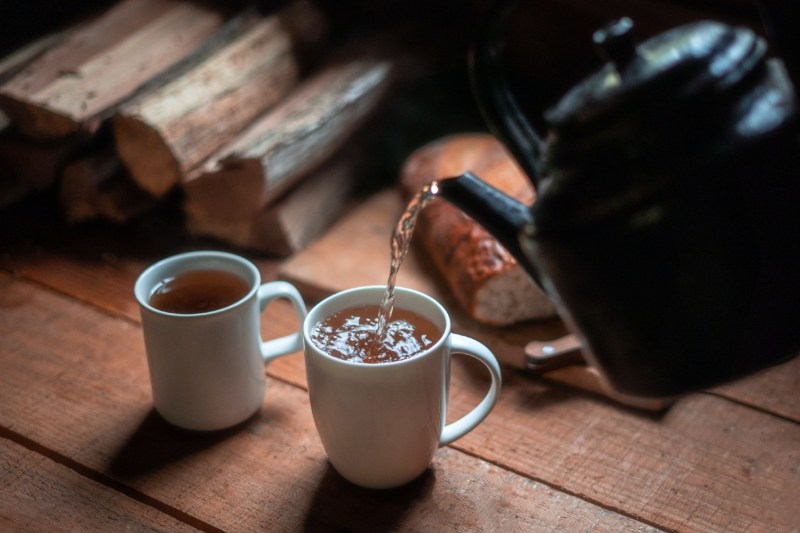
How do you make boba at home?
Making your own boba drink is shockingly easy. If you’ve watched enough Food Network, you’ve probably seen the popular cooking trend of molecular gastronomy, where science and food combine to make some pretty magical and delicious dishes. While boba pearls may look like some sort of modern spherical, alien creation, worry not. No lab coats or goggles are required for this simple recipe. All you need is some tapioca flour and a little food coloring. Keep reading to learn how to make boba tea quickly and easily.
Bubble tea recipe
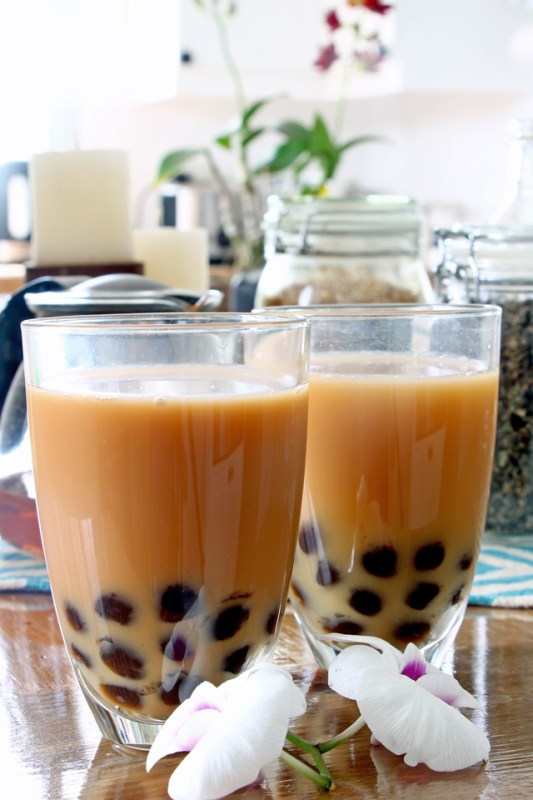
(From Foxy Folksy)
This recipe is for a very easy, very basic, very delicious bubble tea. Of course, feel free to experiment with your favorite flavors.
Ingredients:
- 1/2 cup brown sugar
- 2 1/2 cups water, separated
- 2 tea bags (oolong or other black tea)
- 1 cup black tapioca pearls (recipe below)
- Milk or creamer
Method:
-
In a small saucepan, bring a half cup of water to boil. Add brown sugar and stir until completely dissolved. Remove from heat and cool.
-
In a separate pot, bring 2 cups of water to a boil, then transfer to a large cup or teapot. Add tea bags and steep according to the package directions. Steep longer for a stronger flavor.
-
Add the brown sugar to the steeped tea, then chill in the refrigerator until ready to serve.
-
Pour the chilled tea into two tall glasses and add the tapioca pearls. Add milk and syrup as preferred. Add ice if desired.
Black tapioca pearl recipe
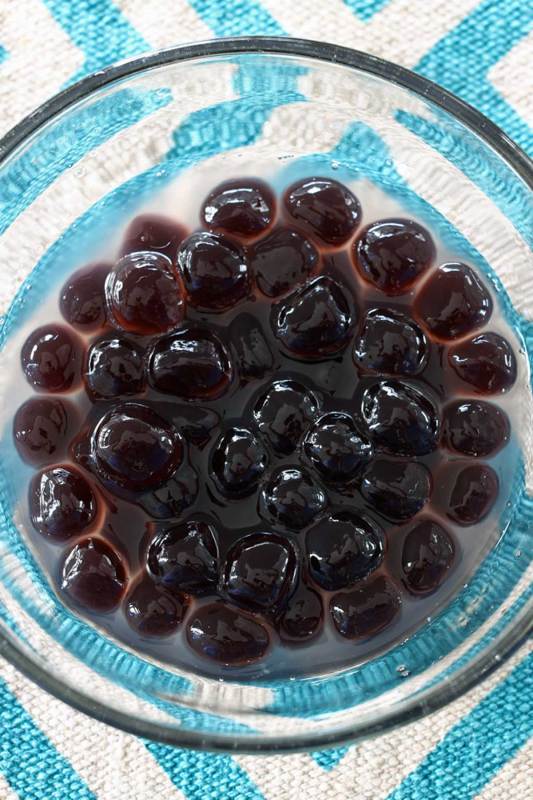
Ingredients:
- 9 tablespoons tapioca flour
- 3 tablespoons boiling water
- 1/4 teaspoon black food coloring liquid
Method:
-
In a small bowl, mix together the boiling water and food coloring.
- In a separate bowl, pour food coloring mixture into the tapioca flour.
- Mix the ingredients together with a fork until a dough starts to form.
- Transfer dough to a work surface and knead until dough becomes smooth.
- Roll dough into slender, snake-like pieces, then cut into small “pearls.” Roll into small ball shapes with your hands. They should be small enough to fit through a large straw, about the size of peas.
- Bring a large pot of water to boil over medium/high heat. Cook tapioca pearls until they are soft and chewy (about 15 minutes).
- Remove from heat and allow to cool. Store in a bowl of water to prevent pearls from sticking together.



